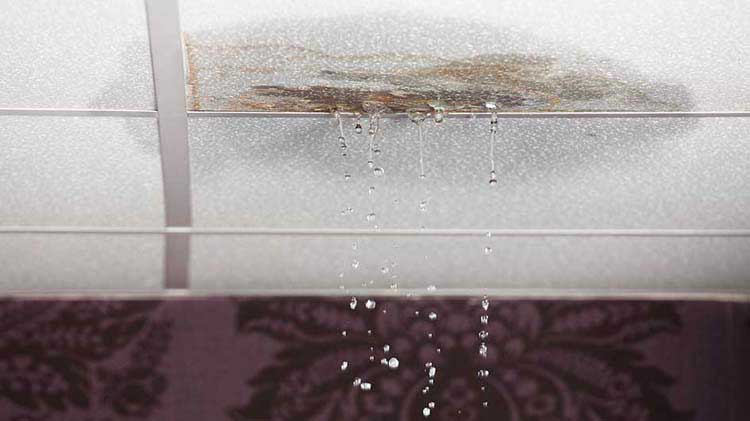We have noticed this great article about How to detect water leaks in your home down the page on the web and decided it made sense to write about it with you on my blog.

Leakages not only trigger waste of water yet can additionally trigger unnecessary damages to your residence as well as promote undesirable organic development. Regrettably, water leakages could go undetected given that a lot of the pipework in our home is hidden. By looking as well as understanding for daily situations that create leakages, you can protect your residence from future leakages and unnecessary damage. Today, we will certainly check out six leakage triggers that may be creating your pipelines to leak.
Elbowing in roots
The majority of water leakages start outside your house instead of inside it. If you see an abrupt reduction in water pressure, say in your faucet, take some time to head out and analyze your backyard. You might see wet spots or sinkholes in your yard, and that could suggest that tree roots are getting into water lines causing water to leak out. You can have your plumber check for intrusion, particularly if you have trees or bushes near your residential or commercial property.
Rusty water supply
As time passes by, your plumbing system ages as well as deterioration such as rust might start eating away the pipelines. This could be the reason for staining or bending on your water pipes. This requires an inspection with your plumber right away. Consider replacing the pipes given that they are at a greater risk of corrosion than the newer designs if our plumbing system is old.
Defective Pipe Joints
The point at which your pipes link is regularly the weakest web link in the waterline. Pipeline joints can deteriorate over time, resulting in water leaks. The majority of pipe joints are not easily visible. If you have loud pipes that make ticking or banging noises, especially when the hot water is switched on, your pipeline joints are most likely under a lot of pressure. It is advisable to have your plumber inspect your system once a year.
Immediate temperature changes.
Extreme temperature level modifications in our pipes can cause them to expand and contract all of a sudden. This growth and tightening might trigger cracks in the pipelines, especially if the temperature level are below cold.
Poor Water Connectors
Sometimes, a leak can be caused by loosened hoses and also pipes that provide your appliances. Generally, shifting is what triggers the loose water Links. You could discover when it comes to a washing device, a tube may spring a leakage due to drinking during the spin cycle. In case of a water links leakage, you may see water running directly from the supply line or pools around your appliances.
Blocked Drains
Obstructed drains may be bothersome and also inconveniencing, but they can often wind up causing an overflow causing break pipelines. Maintain getting rid of any materials that may decrease your drains that can obstruct them to prevent such hassles.
All the above are reasons for leakages yet not all water leakages arise from plumbing leakages; some leakages could come from roofing leakages. All leakages ought to be repaired quickly to avoid water damage.
Leaks not only trigger waste of water however can also cause unnecessary damage to your house as well as advertise undesirable natural development. By looking and comprehending for daily circumstances that cause leaks, you can shield your home from future leaks as well as unneeded damage. Today, we will look at 6 leak creates that may be triggering your pipes to trickle.
At times, a leakage can be caused by loosened pipes and pipes that supply your home appliances. In instance of a water connections leakage, you may observe water running straight from the supply line or puddles around your home appliances.
How To Check For Water Leak In Your Home
How To Check for Leaks
The average household's leaks can account for nearly 10,000 gallons of water wasted every year and ten percent of homes have leaks that waste 90 gallons or more per day. Common types of leaks found in the home are worn toilet flappers, dripping faucets, and other leaking valves. These types of leaks are often easy to fix, requiring only a few tools and hardware that can pay for themselves in water savings. Fixing easily corrected household water leaks can save homeowners about 10 percent on their water bills.
To check for leaks in your home, you first need to determine whether you're wasting water and then identify the source of the leak. Here are some tips for finding leaks:
Take a look at your water usage during a colder month, such as January or February. If a family of four exceeds 12,000 gallons per month, there are serious leaks.
Check your water meter before and after a two-hour period when no water is being used. If the meter changes at all, you probably have a leak.
Identify toilet leaks by placing a drop of food coloring in the toilet tank. If any color shows up in the bowl after 10 minutes, you have a leak. (Be sure to flush immediately after the experiment to avoid staining the tank.)
Examine faucet gaskets and pipe fittings for any water on the outside of the pipe to check for surface leaks.
Undetected water leaks can happen without the home or business owner even realizing. If you suspect a water leak, but not able to find the source. It is time to contact a professional water leak detection service, The Leak Doctor.
How To Find a Water Leak In Your Home
https://www.leakdoctor.com/blog/How-To-Check-For-Water-Leak-In-Your-Home_AE197.html

As a fervent reader about How Fast Water Damage Can Ruin Your Home, I figured sharing that piece of content was smart. You should take the opportunity to share this write-up if you enjoyed reading it. Thank you so much for taking the time to read it.
Explore Now